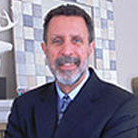10 Ways to Increase Employee Safety and Security
Almost twice as many employees are now working from home as in traditional workplaces in response to COVID-19.
The Stanford Institute for Economic Policy Research estimates that work from home (WFH) currently accounts for 60% of economic activity in the U.S., and many of these policies are expected to remain either permanently or for the long-term.
The employee working from home may still incur a risk of violence and other hazards, but not enjoy the physical security apparatus or violence prevention programs and practices in place in the traditional workplace, thereby creating a perfect storm of
risk.
Led by Steven Crimando, MA, CHPP, CTM, this webinar outlines:
- Duty of care for mobile workers explained: Physical and mental injuries, work-related stress, and employee wellbeing
- Examples of increased hazards and mitigation policies, including training and assessments
- Best ways to formalize and integrate your work from home safety and security policies
|
About the speaker
Steve Crimando, MA, CHPP, CTM Steve Crimando is the principal and founder of Behavioral Science Applications LLC, an operational risk management consultancy located in the New York metropolitan area. He is a consultant and educator focused on the human element in security and emergency management Mr. Crimando is a Certified Threat Manager (CTM), Certified Homeland Protection Professional (CHPP), and a Board Certified Expert in Traumatic Stress (BCETS). With more than 30 years of experience in the field, Mr. Crimando was deployed to the 9/11 and 1993 World Trade Center attacks, as well as New Jersey’s anthrax screening center and other acts of international terrorism. He is a published author who is frequently called upon by the media and the courts as an expert in violence prevention and response. He provides training and support to programs within the U.S. Department of Homeland Security, U.S. Department of Justice, law enforcement, intelligence, and military agencies, as well as NGO’s, such as the United Nations. |

